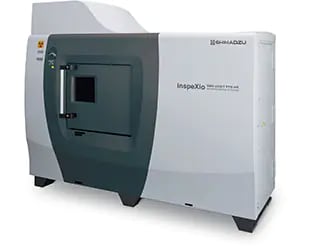Testing and Measuring Instruments

These highly accurate testing and measuring technologies are used to support product inspection and quality control processes for manufacturing in industrial fields. They help ensure our lives are worry-free and safe.
Testing and Measuring Instruments
Particle Size Analysis / Continuous Monitoring Analysis / Balances / Materials Testing & Inspection / Non-Destructive Testing
Strength Evaluation of Various Materials
They are used to test the strength of a wide variety of objects, from materials such as rubber, plastic, or metal to foods, pharmaceuticals, mobile phones, or automobile parts. They are widely used for product development and quality control applications.
Non-Destructive Inspection of Industrial Products
X-ray systems are used to non-destructively inspect the interiors of objects. They are useful for a diverse variety of applications, ranging from tiny electronic parts to automotive aluminum die-cast parts.
Measurement of Particle Sizes in Pharmaceutical and Cosmetics
Particle size analyzers can evaluate the dispersion and aggregation of particles, including nanoparticles. They contribute to fields such as pharmaceuticals, inks, solar power generation, and fuel cells.
Observation of Industrial Materials
Ultrahigh-speed videos can be recorded at speeds up to ten million frames per second. These cameras are used in a wide range of fields, such as material analysis, fluid dynamics, automotive, and sports science.
Improved Accuracy for R&D
These balances enable accurate weight measurements suitable for even R&D applications. Offering both high functionality and general applicability, they satisfy a variety of needs in research facilities.
Controlling the Concentration of Nitrogen and Phosphorus in Effluent Water

Online Total Nitrogen and Total Phosphorus Analyzer
These analyzers can measure nitrogen and phosphorus concentrations contained in effluents discharged into rivers, for example. They can be used to continuously monitor waste water via the cloud, which helps ensure compliance with total water pollutant load regulations.







